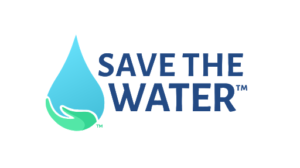
By Stephen Venneman, Staff Writer for Save The WaterTM April 2, 2019
Think for a moment about a dairy farm. You might picture a red barn, grassy fields, and a cow munching happily next to a wooden post fence. Seems nice, right? What’s missing in this mental image, though?
In a word, manure.1,2 Lots of it.
So much manure, in fact, that farmers cannot always control where it goes.2 As a result, where does it end up? That’s a question with several answers, and they all undeniably stink.
What’s the Big Stink?
Farmers are responsible for the containment and treatment of animal waste. Additionally, farmers must make sure the waste doesn’t end up in creeks and groundwater reservoirs, preventing the water from being polluted by nitrates.1,3
Unfortunately, a lot of the technology used to process animal waste is more than a century old.5 It is slow, costly, and most importantly, it is not a self-contained system. As a result, even efficient Concentrated Animal Feeding Operations, or CAFOs, can have animal waste draining into groundwater. Therefore, the water coming from the tap is likely contaminated with nitrates, nitrites, and fecal matter.1 It’s not only disgusting, but it also poses serious health risks for pregnant women, infants, and the elderly.2
Nitrates play a balancing act for humans. The Environmental Protection Agency sets a limit for nitrates in drinking water to 10 mg/L. At this level, nitrates are beneficial as a component of protein. Beyond that, the digestive system converts nitrates into nitrites. Nitrites can be particularly hazardous to pregnant women, infants, and the elderly because they bind to oxygen-carrying hemoglobin in the bloodstream. This can lead to illnesses like methemoglobinemia, also known as “blue baby syndrome” due to the lack of oxygenated blood in the body.
On top of the health factor, there is the economic factor: the cost to collect, store, and treat animal waste can easily surpass $100,000 for even a small CAFO.2
Sadly, trying to find information on newer and more efficient systems can be challenging. A Google search returns a lot of general information on what waste management systems do, but not a whole lot on new technologies. Save The WaterTM has information available to farmers and farm operators to help them select and implement more modern solutions to the challenge of waste management.
What can Farmers Do?
Farm operators are looking to install cost-effective options that check off all regulatory, economic, and conservation requirements. Without a doubt, options are limited. Should farmers keep upgrading old technology, or look into something different? Also, where should they look?
One option that incorporates new technology is Advanced Oxidation Technology, or AOT.5 AOT systems create a closed-loop system where waste products become fertilizer and clean, reusable water. In addition to zero discharge, including smell, AOT’s meet regulatory requirements with no pollution. AOT’s meet regulatory and environmental requirements and can actually improve the profitability of farms. AOT’s also give farmers an additional product to sell. Most importantly, AOT’s are scalable; farmers can expand their operations while maintaining zero discharge. Streams become clearer, fish get healthier, and drinking water supplies are safer.
Getting Started
- Contact Save The WaterTM to learn about options for new AOT systems.
- Donate to Save The WaterTM to promote research into water conservation and protection technologies.
References
- Steven Elbow. March 15, 2019. “Wisconsin Dairy Farmers Pushing for Clearinghouse for Water Pollution Credits.” The Cap Times. https://www.bit.ly/2CP6YCn.
- Brian Oram, PG. “Nitrates and Nitrites in Drinking Water Groundwater and Surface Waters. Water Research Center. https://www.water-research.net/nitrite.
- U.S. Department of Agriculture. “Animal Feeding Operations.” National Resources Conservation Service. https://www.nrcs.usda.gov/wps/portal/nrcs/main/national/plantsanimals/livestock/afo/
- U.S. Environmental Protection Agency. “Toxic and Priority Pollutants Under the Clean Water Act.” https://www.epa.gov/eg/toxic-and-priority-pollutants-under-clean-water-act
Save The WaterTM. “Executive Summary AOT.”

